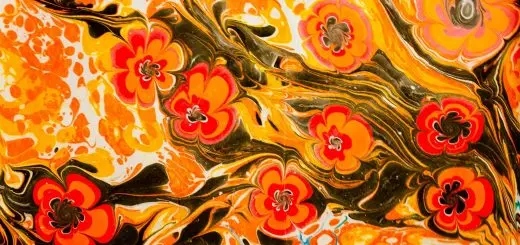Creative Brochure Design for Offline Sales

Looking for more amazing products? Check out our online store and explore our collection here! Happy shopping!
Before diving in, please note: This post is for informational purposes only. If you’d like to know more about how we approach topics, feel free to check out our friendly Disclaimer Page.
Hey there, amazing readers! 
We’re committed to delivering quality posts, and your support (even just sticking around despite the ads) means everything to us. So, bear with us, and thanks for helping us keep the good vibes rolling. Now, on to the fun stuff!
TRANSLATE BUTTON AT THE END OF THE ARTICLE
A Quick Overview
In today’s digital age, where online marketing often takes center stage, the importance of offline marketing strategies should not be overlooked.
One such powerful tool in offline sales is a well-designed brochure.
Brochures provide a tangible and lasting impression on potential customers, allowing businesses to showcase their products or services in a visually appealing and informative way.
Creative brochure design can capture the attention of your target audience, communicate your brand message effectively, and ultimately drive sales.
In this article, we will delve into the intricacies of creating a compelling brochure design for offline sales, covering everything from layout and color schemes to engaging copywriting techniques and interactive features.
Importance of Brochure Design in Offline Sales
Brochures play a crucial role in offline sales as they serve as a physical representation of your brand.
A well-designed brochure can leave a lasting impression on potential customers, helping to build brand recognition and credibility.
Unlike digital marketing materials that can easily be forgotten, a tangible brochure can be kept by the recipient and referred to at their convenience.
Moreover, brochures are versatile marketing tools that can be distributed at trade shows, events, or even mailed directly to prospects, allowing you to reach a wider audience and generate leads effectively.
Elements of an Effective Brochure Design
An effective brochure design should be visually appealing, easy to read, and informative.
It should have a clear hierarchy of information, with key messages prominently displayed.
The design should also be consistent with your brand identity to ensure brand recognition.
Elements such as typography, imagery, color scheme, and layout all play a crucial role in creating a cohesive and engaging design.
Additionally, the use of whitespace is essential to prevent the brochure from looking cluttered and overwhelming.
A good balance of text and visuals is key to capturing the reader’s attention and delivering your message effectively.
Understanding Your Target Audience
Before designing a brochure, it is essential to understand your target audience.
Consider their demographics, preferences, and pain points to tailor your messaging accordingly.
By creating buyer personas, you can gain insights into what resonates with your audience and design a brochure that speaks directly to their needs and interests.
This targeted approach will increase the effectiveness of your brochure and improve conversion rates.
Conducting market research and gathering feedback from existing customers can also provide valuable insights into what motivates your target audience to make a purchase.
Integrating Brand Identity into Brochure Design
Your brochure should be a reflection of your brand identity, incorporating your logo, color palette, and brand messaging cohesively.
Consistency is key to reinforcing brand recognition and establishing trust with your audience.
Make sure that the design elements align with your brand’s values and personality to create a strong brand image.
By integrating your brand identity into the brochure design, you can enhance brand recall and differentiate yourself from competitors.
A well-branded brochure will leave a lasting impression on potential customers and increase brand loyalty.
Creative Layouts for Maximum Impact
The layout of your brochure plays a significant role in capturing the reader’s attention and guiding them through the content.
Consider using creative layouts such as asymmetrical designs, unique folds, or die-cut shapes to make your brochure stand out.
A well-structured layout should lead the reader from the cover to the call-to-action seamlessly, keeping them engaged throughout.
Use visual hierarchy to highlight key information and make it easy for the reader to navigate the content.
Experiment with different layouts to find one that best suits your brand and message while maximizing impact.
Choosing the Right Color Scheme
Color psychology plays a vital role in evoking emotions and creating a memorable experience for the reader.
Choose a color scheme that aligns with your brand personality and conveys the right message.
Warm colors like red and orange can create a sense of urgency or excitement, while cool colors like blue and green evoke feelings of trust and calmness.
Use complementary colors to create contrast and visual interest, making key elements stand out.
Consider the cultural implications of color choices as well, as certain colors may have different meanings in various regions.
A well-thought-out color scheme can enhance the overall aesthetic appeal of your brochure and leave a lasting impression on the reader.
Incorporating Compelling Visuals
Visual elements such as images, illustrations, and graphics are powerful tools for capturing attention and conveying information quickly.
Use high-quality visuals that are relevant to your brand and message to create a visually appealing brochure.
Incorporate imagery that showcases your products or services in action, evoking emotion and drawing the reader in.
Infographics can also be used to present complex information in a digestible format, making it easier for the reader to understand.
Visuals should complement the text and reinforce key messages effectively.
By incorporating compelling visuals, you can enhance the overall design of your brochure and leave a lasting impact on the reader.
Utilizing Engaging Copywriting Techniques
The copywriting in your brochure should be engaging, informative, and persuasive.
Use clear and concise language to convey your message effectively and avoid jargon or technical terms that may confuse the reader.
Highlight the benefits of your products or services and address the needs of your target audience directly.
Use storytelling techniques to captivate the reader and create an emotional connection with your brand.
Incorporate calls-to-action throughout the brochure to encourage the reader to take the next step, whether it’s visiting your website, contacting you for more information, or making a purchase.
Well-crafted copywriting can make a significant impact on the effectiveness of your brochure and drive conversions.
Printing and Paper Selection Tips
The quality of printing and paper can greatly influence the overall look and feel of your brochure.
Choose a reputable printing company that specializes in brochure printing to ensure high-quality results.
Consider factors such as paper stock, finish, and coating options to enhance the tactile experience of the brochure.
Matte finishes can give a sophisticated look, while glossy finishes can make colors pop and images more vibrant.
Experiment with different paper weights and textures to find one that complements your design aesthetic.
Additionally, consider environmentally friendly options such as recycled paper or soy-based inks to align with your brand’s values.
Investing in high-quality printing and paper will elevate the perceived value of your brochure and make a lasting impression on recipients.
Interactive Features for Modern Brochures
Incorporating interactive features into your brochure can enhance engagement and create a memorable experience for the reader.
Consider adding QR codes that lead to additional online content, such as videos, product demos, or interactive elements.
Augmented reality (AR) can also be used to bring static images to life and provide a more immersive experience.
Interactive maps, quizzes, or games can add an element of fun and encourage interaction with the brochure.
By leveraging technology, you can make your brochure more engaging and interactive, appealing to modern audiences who are accustomed to digital experiences.
Experiment with different interactive features to find ones that resonate with your target audience and align with your brand message.
Case Studies of Successful Brochure Designs
Examining case studies of successful brochure designs can provide valuable insights into what works and what doesn’t in brochure design.
Look for examples from companies in similar industries or target markets to see how they have effectively used brochures to drive sales.
Analyze the design elements, messaging, and overall strategy behind these successful campaigns to glean inspiration for your own brochure design.
Pay attention to how these brochures have captured the attention of the audience, communicated the brand message effectively, and led to tangible results.
By studying successful case studies, you can refine your own brochure design and increase the likelihood of achieving your sales goals.
Measuring the Success of Your Brochure Campaign
Once your brochures have been distributed, it’s essential to track the effectiveness of your campaign and measure the return on investment (ROI).
Implement tracking mechanisms such as unique QR codes, custom URLs, or promotional codes to monitor the response rates and engagement levels.
Analyze key metrics such as website traffic, leads generated, and conversions attributed to the brochure campaign.
Collect feedback from recipients to gain insights into what resonated with them and what could be improved in future campaigns.
By measuring the success of your brochure campaign, you can make data-driven decisions to optimize future marketing efforts and ensure a positive ROI.
Continuously monitor and adjust your strategy based on the results to maximize the impact of your brochure design on offline sales.
Conclusion
In conclusion, creative brochure design is a powerful tool for driving offline sales and building brand awareness.
By paying attention to elements such as layout, color scheme, visuals, copywriting, and interactive features, you can create a compelling brochure that resonates with your target audience and drives conversions.
Understanding your target audience and integrating your brand identity into the design are essential steps in creating a successful brochure campaign.
By following best practices in printing and paper selection, as well as incorporating interactive features for modern brochures, you can enhance the overall impact of your brochure design.
Measure the success of your campaign through tracking mechanisms and analytics to optimize future marketing efforts and ensure a positive ROI.
With a well-crafted brochure design, you can effectively communicate your brand message, capture the attention of potential customers, and drive sales in the offline realm.

The Enlightenment Journey is a remarkable collection of writings authored by a distinguished group of experts in the fields of spirituality, new age, and esoteric knowledge.
This anthology features a diverse assembly of well-experienced authors who bring their profound insights and credible perspectives to the forefront.
Each contributor possesses a wealth of knowledge and wisdom, making them authorities in their respective domains.
Together, they offer readers a transformative journey into the realms of spiritual growth, self-discovery, and esoteric enlightenment.
The Enlightenment Journey is a testament to the collective expertise of these luminaries, providing readers with a rich tapestry of ideas and information to illuminate their spiritual path.
Our Diverse Expertise
While our primary focus is on spirituality and esotericism, we are equally passionate about exploring a wide range of other topics and niches 

To ensure we provide the most accurate and valuable insights, we collaborate with trusted experts in their respective domains 
Our blog originally focused on spirituality and metaphysics, but we’ve since expanded to cover a wide range of niches. Don’t worry—we continue to publish a lot of articles on spirituality! Frequently visit our blog to explore our diverse content and stay tuned for more insightful reads.
Hey there, amazing reader! 
Check out our store here and take a peek at some of our featured products below! Thanks for being awesome!










